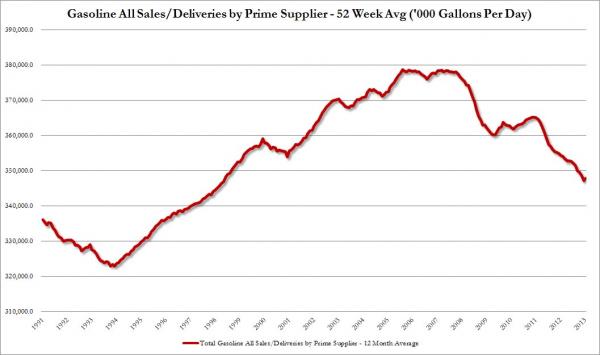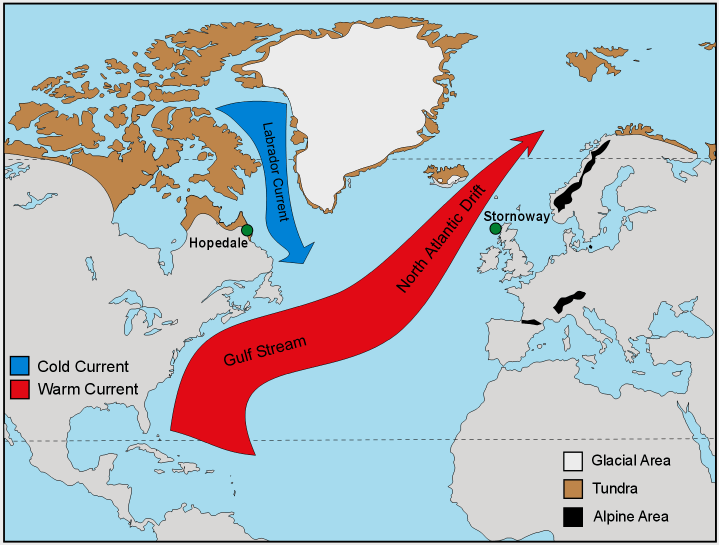Sebastiaan de Boorder / Profilo
- Informazioni
|
11+ anni
esperienza
|
0
prodotti
|
0
versioni demo
|
|
0
lavori
|
0
segnali
|
0
iscritti
|
For over thousands of years man has been trying to predict his future. He has always failed-and his failures are buried in the dust of history. Legendary fortune tellers, prophets, oracles, medicine men, astrologers, numerologists, mystics, charlatans, and seers, all claimed possession of supernatural and occult powers that enabled them to see into the future. Wars were fought, kingdoms fell, and civilizations were altered as a result of their pronouncements and predictions.
We are not without their counterparts today. They invade our homes through the media of television, radio, internet, smartphones, and the press, claiming hidden and mysterious powers that enable them to solve murders, foretell earthquakes, and blueprint our days in advance. They play on latent superstitions within all of us, piously predicting the next political assassination, the next airline tragedy, the next Hollywood divorce.
But, working quietly behind the scenes, thousands of scientists in fields as unrelated as history, botany, anthropology, mammalogy, terrestrial magnetism, sociology, and economics, to name only a few, are accumulating facts and figures that promise to make this age-old dream of foretelling the future at least a partia !!
OUR MISSION: FIND UNIVERSAL CYCLES AND THE MYSTERIOUS FORCES THAT TRIGGER EVENTS ON FINANCIAL MARKETS
( Knowledge is wonderful; Science is amazing. But wisdom is power )
We are not without their counterparts today. They invade our homes through the media of television, radio, internet, smartphones, and the press, claiming hidden and mysterious powers that enable them to solve murders, foretell earthquakes, and blueprint our days in advance. They play on latent superstitions within all of us, piously predicting the next political assassination, the next airline tragedy, the next Hollywood divorce.
But, working quietly behind the scenes, thousands of scientists in fields as unrelated as history, botany, anthropology, mammalogy, terrestrial magnetism, sociology, and economics, to name only a few, are accumulating facts and figures that promise to make this age-old dream of foretelling the future at least a partia !!
OUR MISSION: FIND UNIVERSAL CYCLES AND THE MYSTERIOUS FORCES THAT TRIGGER EVENTS ON FINANCIAL MARKETS
( Knowledge is wonderful; Science is amazing. But wisdom is power )
Amici
929
Richieste
In uscita
Sebastiaan de Boorder
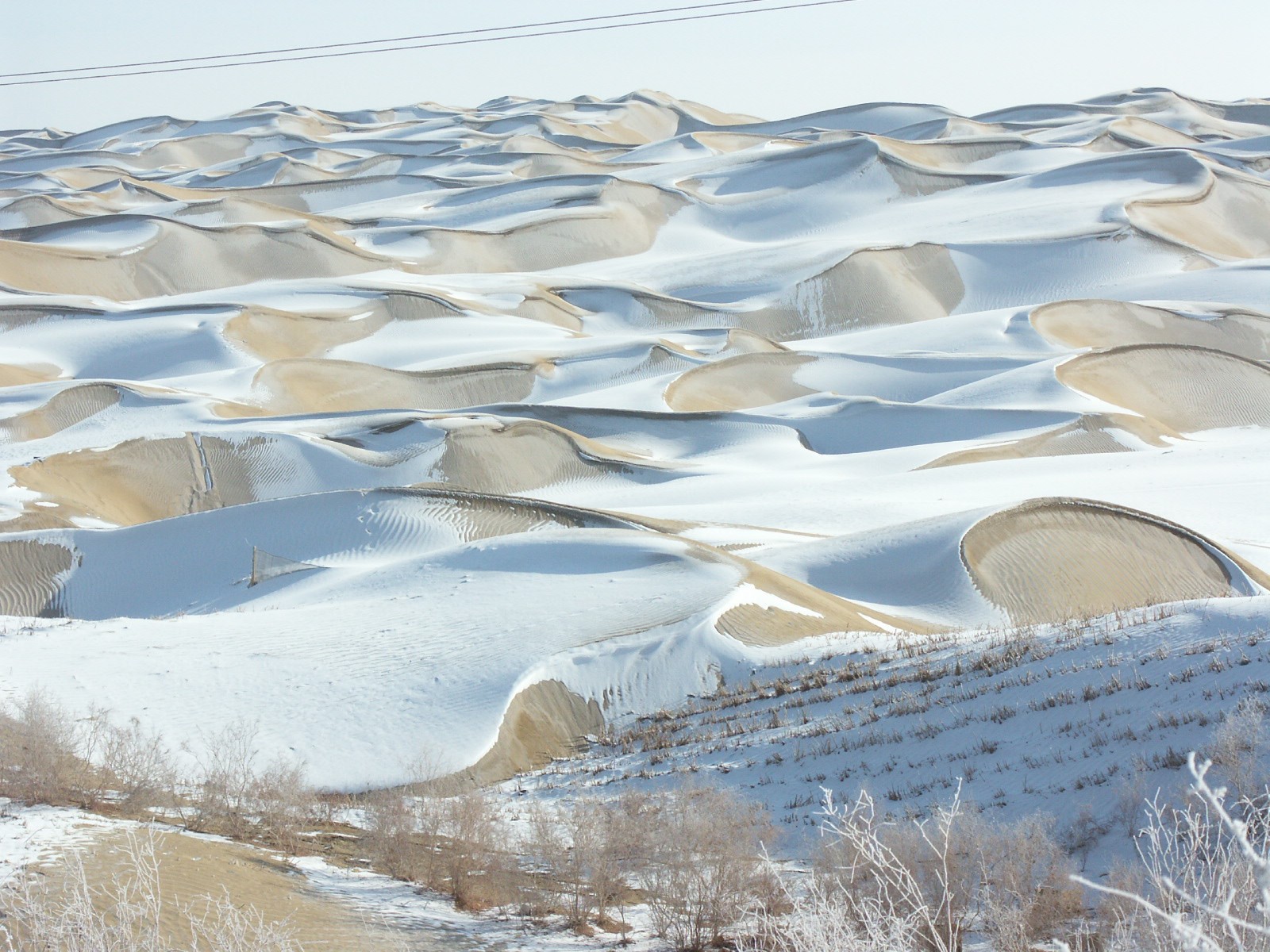
Chile's Atacama Desert Sees Rare Snowfall :
Local officials say they are concerned that the heaviest snowfall in 30 years could cause rivers to flood.
A rare snowfall in Chile's Atacama desert has delighted visitors to one of the world's driest areas.
Residents of San Pedro de Atacama say the weekend snow was the heaviest in three decades for the desert city, which is 750 miles north of the capital, Santiago.
But local officials say they are concerned that the snow and rain that fell over the weekend could cause some rivers to flood as has happened in the past.
The national tourism office says the road to the city was temporarily blocked due to the unusual weather.
Officials have not ordered any evacuation, although they expect more rain in the area.
The desert is described as the driest hot desert in the world.
It is made up mostly of salt lakes, sand and felsic lava.
Its average rainfall is less than one inch.
Source : http://news.sky.com/story/1133717/chiles-atacama-desert-sees-rare-snowfall
Local officials say they are concerned that the heaviest snowfall in 30 years could cause rivers to flood.
A rare snowfall in Chile's Atacama desert has delighted visitors to one of the world's driest areas.
Residents of San Pedro de Atacama say the weekend snow was the heaviest in three decades for the desert city, which is 750 miles north of the capital, Santiago.
But local officials say they are concerned that the snow and rain that fell over the weekend could cause some rivers to flood as has happened in the past.
The national tourism office says the road to the city was temporarily blocked due to the unusual weather.
Officials have not ordered any evacuation, although they expect more rain in the area.
The desert is described as the driest hot desert in the world.
It is made up mostly of salt lakes, sand and felsic lava.
Its average rainfall is less than one inch.
Source : http://news.sky.com/story/1133717/chiles-atacama-desert-sees-rare-snowfall

Sebastiaan de Boorder
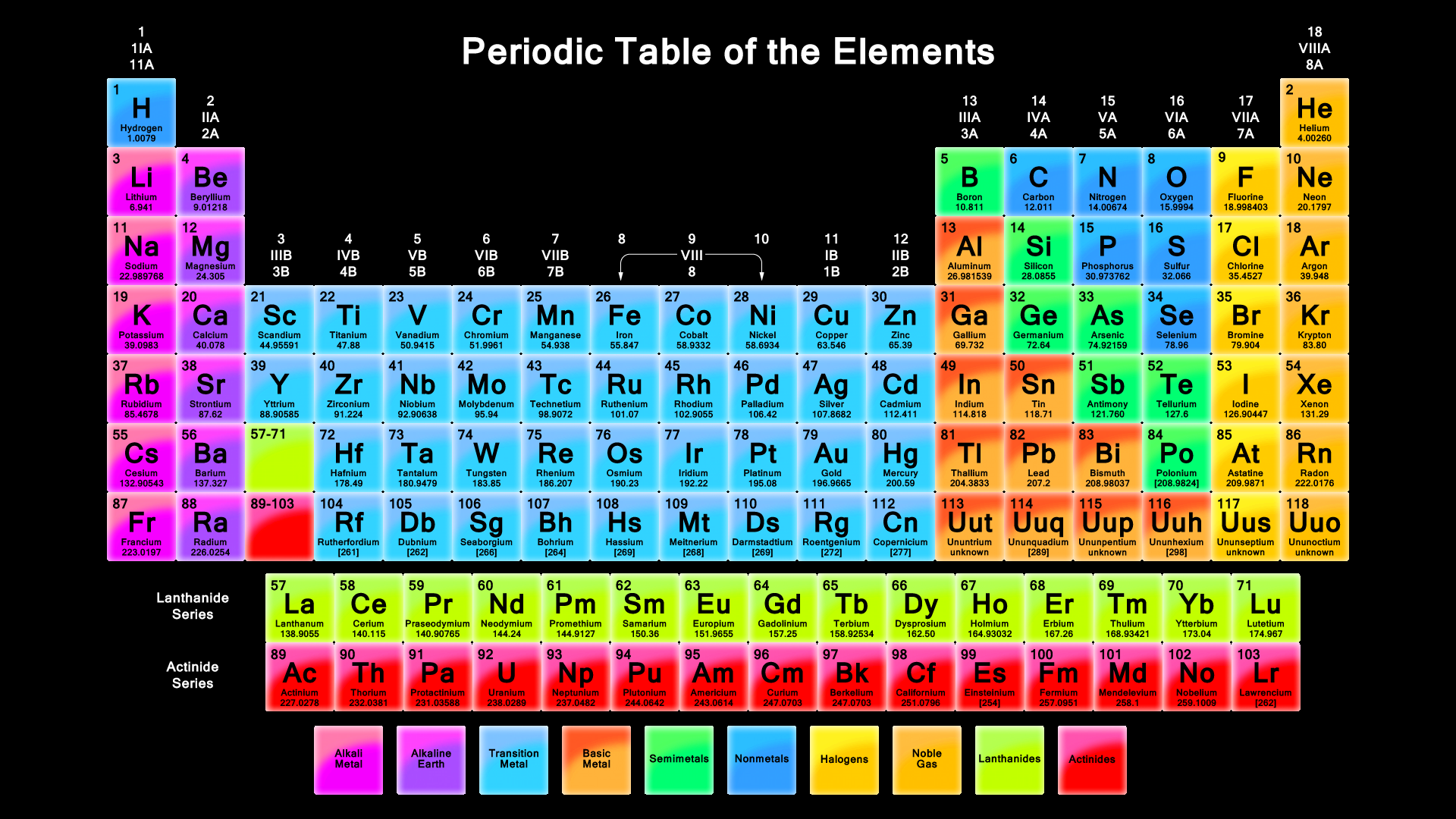
EXISTENCE OF NEW ELEMENT CONFIRMED
Remember the periodic table from chemistry class in school? Researchers from Lund University in Sweden have presented fresh evidence that confirms the existence of a previously unknown chemical element. The new, super-heavy element has yet to be named.
An international team of researchers, led by physicists from Lund University, have confirmed the existence of what is considered a new element with atomic number 115. The experiment was conducted at the GSI research facility in Germany. The results confirm earlier measurements performed by research groups in Russia.
“This was a very successful experiment and is one of the most important in the field in recent years”, said Dirk Rudolph, Professor at the Division of Nuclear Physics at Lund University.
Besides the observations of the new chemical element, the researchers have also gained access to data that gives them a deeper insight into the structure and properties of super-heavy atomic nuclei.
By bombarding a thin film of americium with calcium ions, the research team was able to measure photons in connection with the new element’s alpha decay. Certain energies of the photons agreed with the expected energies for X-ray radiation, which is a ‘fingerprint’ of a given element.
The new super-heavy element has yet to be named. A committee comprising members of the international unions of pure and applied physics and chemistry will review the new findings to decide whether to recommend further experiments before the discovery of the new element is acknowledged.
Source : http://www.lunduniversity.lu.se/o.o.i.s?id=24890&news_item=6082
Remember the periodic table from chemistry class in school? Researchers from Lund University in Sweden have presented fresh evidence that confirms the existence of a previously unknown chemical element. The new, super-heavy element has yet to be named.
An international team of researchers, led by physicists from Lund University, have confirmed the existence of what is considered a new element with atomic number 115. The experiment was conducted at the GSI research facility in Germany. The results confirm earlier measurements performed by research groups in Russia.
“This was a very successful experiment and is one of the most important in the field in recent years”, said Dirk Rudolph, Professor at the Division of Nuclear Physics at Lund University.
Besides the observations of the new chemical element, the researchers have also gained access to data that gives them a deeper insight into the structure and properties of super-heavy atomic nuclei.
By bombarding a thin film of americium with calcium ions, the research team was able to measure photons in connection with the new element’s alpha decay. Certain energies of the photons agreed with the expected energies for X-ray radiation, which is a ‘fingerprint’ of a given element.
The new super-heavy element has yet to be named. A committee comprising members of the international unions of pure and applied physics and chemistry will review the new findings to decide whether to recommend further experiments before the discovery of the new element is acknowledged.
Source : http://www.lunduniversity.lu.se/o.o.i.s?id=24890&news_item=6082

Sebastiaan de Boorder

Wormhole Is Best Bet for Time Machine, Astrophysicist Says
The concept of a time machine typically conjures up images of an implausible plot device used in a few too many science-fiction storylines. But according to Albert Einstein's general theory of relativity, which explains how gravity operates in the universe, real-life time travel isn't just a vague fantasy.
Traveling forward in time is an uncontroversial possibility, according to Einstein's theory. In fact, physicists have been able to send tiny particles called muons, which are similar to electrons, forward in time by manipulating the gravity around them. That's not to say the technology for sending humans 100 years into the future will be available anytime soon, though.
Time travel to the past, however, is even less understood. Still, astrophysicist Eric W. Davis, of the EarthTech International Institute for Advanced Studies at Austin, argues that it's possible. All you need, he says, is a wormhole, which is a theoretical passageway through space-time that is predicted by relativity.
Source : livescience
Jillian Scharr, Staff Writer
The concept of a time machine typically conjures up images of an implausible plot device used in a few too many science-fiction storylines. But according to Albert Einstein's general theory of relativity, which explains how gravity operates in the universe, real-life time travel isn't just a vague fantasy.
Traveling forward in time is an uncontroversial possibility, according to Einstein's theory. In fact, physicists have been able to send tiny particles called muons, which are similar to electrons, forward in time by manipulating the gravity around them. That's not to say the technology for sending humans 100 years into the future will be available anytime soon, though.
Time travel to the past, however, is even less understood. Still, astrophysicist Eric W. Davis, of the EarthTech International Institute for Advanced Studies at Austin, argues that it's possible. All you need, he says, is a wormhole, which is a theoretical passageway through space-time that is predicted by relativity.
Source : livescience
Jillian Scharr, Staff Writer

Sebastiaan de Boorder
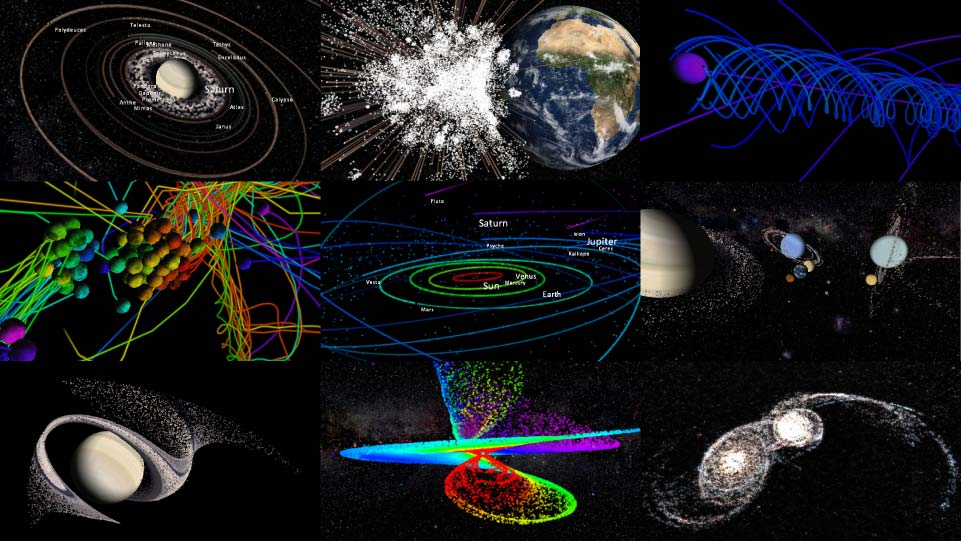
Something to play with in your weekend :
http://universesandbox.com/
The software is free for schools and universities!
http://universesandbox.com/
The software is free for schools and universities!

Sebastiaan de Boorder

Self-Healing Solar Cells ‘Channel’ Natural Processes
To understand how solar cells heal themselves, look no further than the nearest tree leaf or the back of your hand.
The “branching” vascular channels that circulate life-sustaining nutrients throughout leaves and hands serve as the inspiration for solar cells that can restore themselves efficiently and inexpensively.
In a new paper, North Carolina State University researchers Orlin Velev and Hyung-Jun Koo show that creating solar cell devices with channels that mimic organic vascular systems can effectively reinvigorate solar cells whose performance deteriorates due to degradation by the sun’s ultraviolet rays. Solar cells that are based on organic systems hold the potential to be less expensive and more environmentally friendly than silicon-based solar cells, the current industry standard.
The nature-mimicking devices are a type of dye-sensitized solar cells (DSSCs), composed of a water-based gel core, electrodes, and inexpensive, light-sensitive, organic dye molecules that capture light and generate electric current. However, the dye molecules that get “excited” by the sun’s rays to produce electricity eventually degrade and lose efficiency, Velev says, and thus need to be replenished to reboot the device’s effectiveness in harnessing the power of the sun.
“Organic material in DSSCs tends to degrade, so we looked to nature to solve the problem,” Velev said. “We considered how the branched network in a leaf maintains water and nutrient levels throughout the leaf. Our microchannel solar cell design works in a similar way. Photovoltaic cells rendered ineffective by high intensities of ultraviolet rays were regenerated by pumping fresh dye into the channels while cycling the exhausted dye out of the cell. This process restores the device’s effectiveness in producing electricity over multiple cycles.”
Velev, Invista Professor of Chemical and Biomolecular Engineering at NC State and the lead author of a paper in Scientific Reports describing the research, adds that the new gel-microfluidic cell design was tested against other designs, and that branched channel networks similar to the ones found in nature worked most effectively.
Study co-author Dr. Hyung-Jun Koo is a former NC State Ph.D. student who is now a postdoctoral researcher at the University of Illinois. The study was funded by the National Science Foundation and the U.S. Department of Energy.
Koo and Velev reported earlier a new type of biomimetic hydrogel solar cell.
Authors: Hyung-Jun Koo and Orlin D. Velev, NC State University
Published: Aug. 5, 2013, in Scientific Reports
To understand how solar cells heal themselves, look no further than the nearest tree leaf or the back of your hand.
The “branching” vascular channels that circulate life-sustaining nutrients throughout leaves and hands serve as the inspiration for solar cells that can restore themselves efficiently and inexpensively.
In a new paper, North Carolina State University researchers Orlin Velev and Hyung-Jun Koo show that creating solar cell devices with channels that mimic organic vascular systems can effectively reinvigorate solar cells whose performance deteriorates due to degradation by the sun’s ultraviolet rays. Solar cells that are based on organic systems hold the potential to be less expensive and more environmentally friendly than silicon-based solar cells, the current industry standard.
The nature-mimicking devices are a type of dye-sensitized solar cells (DSSCs), composed of a water-based gel core, electrodes, and inexpensive, light-sensitive, organic dye molecules that capture light and generate electric current. However, the dye molecules that get “excited” by the sun’s rays to produce electricity eventually degrade and lose efficiency, Velev says, and thus need to be replenished to reboot the device’s effectiveness in harnessing the power of the sun.
“Organic material in DSSCs tends to degrade, so we looked to nature to solve the problem,” Velev said. “We considered how the branched network in a leaf maintains water and nutrient levels throughout the leaf. Our microchannel solar cell design works in a similar way. Photovoltaic cells rendered ineffective by high intensities of ultraviolet rays were regenerated by pumping fresh dye into the channels while cycling the exhausted dye out of the cell. This process restores the device’s effectiveness in producing electricity over multiple cycles.”
Velev, Invista Professor of Chemical and Biomolecular Engineering at NC State and the lead author of a paper in Scientific Reports describing the research, adds that the new gel-microfluidic cell design was tested against other designs, and that branched channel networks similar to the ones found in nature worked most effectively.
Study co-author Dr. Hyung-Jun Koo is a former NC State Ph.D. student who is now a postdoctoral researcher at the University of Illinois. The study was funded by the National Science Foundation and the U.S. Department of Energy.
Koo and Velev reported earlier a new type of biomimetic hydrogel solar cell.
Authors: Hyung-Jun Koo and Orlin D. Velev, NC State University
Published: Aug. 5, 2013, in Scientific Reports

Sebastiaan de Boorder

COLORFUL SPRITES OVER NEBRASKA:
"August 12th was another successful night in our sprites campaign," reports Jason Ahrns of the University of Alaska Fairbanks. With a team of researchers from NCAR, he has been flying over the midwestern USA onboard a Gulfstream V in search of exotic forms of lightning. As they were photographing a thunderstorm over Nebraska, these six sprites appeared:
These remarkably beautiful discharges were red on top and purple on the bottom. "I really can't explain the color change," says Ahrns. "That's one of the things we hope to investigate with this campaign by capturing high speed spectra."
First documented in 1989 by scientists from the University of Minnesota who photographed strange flashes coming out of the tops of thunderstorms, sprites remain a mystery today. Neither their basic physics nor their effect on the surrounding atmosphere is well understood. "Do sprites have a large scale impact on the middle atmosphere?" asks Ahrns. "Sprites clearly represent some kind of transfer of energy, but is it on a scale that has a significant effect on the weather and climate? We can't answer that without studying them."
The ephemeral nature of sprites (they typically last no more than a few milliseconds) makes them tricky to study. Researchers on the NCAR Gulfstream capture sprites using Phantom cameras running at 10,000 frames per second. "One of the Phantoms has a diffraction grating in front of it to capture high speed spectra, which I don't think has ever been done before," notes Ahrns.
The image is an example. More may be found in Ahrns' personal blog.
http://musubk.blogspot.nl/2013/08/sprites-2013-update-5.html
"August 12th was another successful night in our sprites campaign," reports Jason Ahrns of the University of Alaska Fairbanks. With a team of researchers from NCAR, he has been flying over the midwestern USA onboard a Gulfstream V in search of exotic forms of lightning. As they were photographing a thunderstorm over Nebraska, these six sprites appeared:
These remarkably beautiful discharges were red on top and purple on the bottom. "I really can't explain the color change," says Ahrns. "That's one of the things we hope to investigate with this campaign by capturing high speed spectra."
First documented in 1989 by scientists from the University of Minnesota who photographed strange flashes coming out of the tops of thunderstorms, sprites remain a mystery today. Neither their basic physics nor their effect on the surrounding atmosphere is well understood. "Do sprites have a large scale impact on the middle atmosphere?" asks Ahrns. "Sprites clearly represent some kind of transfer of energy, but is it on a scale that has a significant effect on the weather and climate? We can't answer that without studying them."
The ephemeral nature of sprites (they typically last no more than a few milliseconds) makes them tricky to study. Researchers on the NCAR Gulfstream capture sprites using Phantom cameras running at 10,000 frames per second. "One of the Phantoms has a diffraction grating in front of it to capture high speed spectra, which I don't think has ever been done before," notes Ahrns.
The image is an example. More may be found in Ahrns' personal blog.
http://musubk.blogspot.nl/2013/08/sprites-2013-update-5.html
Sebastiaan de Boorder
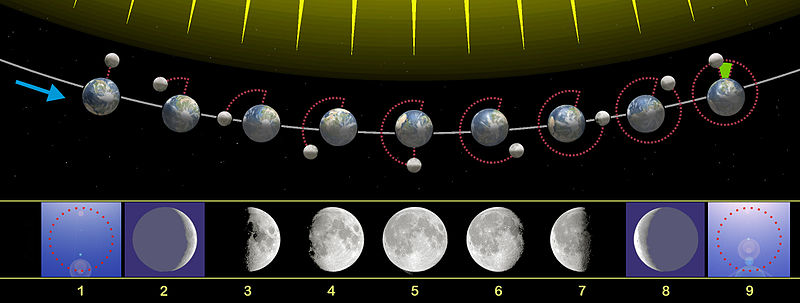
Why Do We Only See One Side of the Moon?
You may have heard references made to the "dark side" of the Moon. This popular, although somewhat inaccurate term refers to the fact that only one face of the Moon, the "near side", is visible to us. The dark side or far side is permanently rotated away from our planet.
Why is this the case? We all know that the Earth rotates on its own axis, so theoretically, the Moon should also do the same, allowing us to get a full picture of the planetoid. Why are we limited to seeing only 50 percent? It turns out that the speed at which the Moon rotates has led to this particular phenomenon. Millions of years ago, the Moon spun at a much faster pace than it does now. However, the gravitational influence of the Earth has gradually acted upon the Moon to slow its rotation down, in the same way that the much smaller gravitational influence of the Moon acts upon the Earth to create tides. This influence slowed the rotational period of the Moon to match that of its orbit – about 29.5 days – and it is now "locked in" to this period.
If the Moon didn't spin at all, then eventually it would show its far side to the Earth while moving around our planet in orbit. However, since the rotational period is exactly the same as the orbital period, the same portion of the Moon's sphere is always facing the Earth.
Another interesting fact is that actually a little bit more than half of the Moon's surface is observable from Earth. Since the Moon's orbit is elliptical, and not circular, the speed of its orbital travel increases and decreases depending on how close it is to our planet. The rotational speed of the Moon is constant however – and this difference between orbital speed and rotational speed means that when the Moon is farthest from the Earth, its orbital speed slows down just enough to allow its rotational speed to overtake it, giving observers a small glimpse of the usually hidden area. The term for this "rocking" motion of the Moon is called libration and it allows for 59 percent of the Moon to be seen in total (over time).
Finally, the reason that the far side of the Moon is frequently referred to as the "dark side" is because many people mistakenly think that it never sees any light from the sun. This notion results from a misinterpretation of the fact that it is never illuminated so that it can be observed from Earth. In fact, since the Moon is constantly rotating on its own axis, there is no area of the planetoid which is in permanent darkness, and the far side of the Moon is only completely devoid of sunlight during a Full Moon – when the Sun is facing the Moon with the Earth in between.
Some strange Moon facts:
1. Moon’s Age:
Is much older than previously expected and maybe even older than the Earth or even the Sun. Earth’s age is estimated to be 4.6 billion years old at the most by some scientists – while various moon rocks were dated at 5.3 billion years old. What’s more puzzling is that the dust upon which they were resting was at least another billion years older.
2. Cheese:
In a survey conducted in 1988, 13% of those surveyed believed that the moon is made of cheese.
3. Heavier Elements on Surface:
On Earth and the composition of other planets, the heavier elements are normally found in the core while the lighter materials are concentrated at the surface. But not so with the moon. The abundance of refractory elements like titanium in the surface areas is so pronounced, that several geologists proposed that the refractory compounds must have been brought to the moon’s surface in great quantity in some unknown way. They are adamant. They don’t know how, but there is no other way for this to have happened!
4. Magnetic Rocks:
Moon rocks are magnetised. This is very strange because there is no magnetic field on the moon itself. And it could not have originated from a “close call” with Earth because such an encounter would have ripped the moon apart.
5. Hollow Moon:
The moon’s mean density is 3.34 gm/cm3 (3.34 times an equal volume of water) whereas the Earth’s mean density is 5.5. What does this mean? In 1962, NASA scientist Dr. Gordon MacDonald stated, “If the astronomical data are reduced, it is found that the data require that the interior of the moon is more like a hollow than a homogeneous sphere.”
Nobel chemist Dr. Harold Urey suggested the moon’s reduced density is because of large areas inside the moon where is “simply a cavity.”
MIT’s Dr. Sean C. Solomon wrote, “the Lunar Orbiter experiments vastly improved our knowledge of the moon’s gravitational field… indicating the frightening possibility that the moon might be hollow.”
In Carl Sagan’s work Intelligent Life in the Universe, the famous astronomer stated, “A natural satellite cannot be a hollow object.”
6. Moon Echoes:
On the 20th November 1969, the crew of Apollo 12 jettisoned the lunar module ascent stage causing it to crash onto the moon some 40 miles from the Apollo 12 landing site. This created an artificial moonquake with startling characteristics. The moon reverberated like a bell for more than an hour. This phenomenon was intentionally repeated with Apollo 13, when they allowed the third stage to impact the moon. The results were even more startling. Seismic instruments recorded that the reverberations lasted for three hours and twenty minutes and travelled to a depth of twenty-five miles. This lead to the conclusion that the moon has an unusually light, or even no core.
7. The Moon made Superstorm Sandy more disastrous.
The gravitational pull of the Moon pulls the water in the oceans toward it. The Moon creates a water bulge on the Earth and is the reason for the tides.
Full moons make the tide even bigger, and the full moon on Oct. 29 contributed to Superstorm Sandy's record-setting storm surge in New York and New Jersey.
8. Weird Orbit:
Our moon does not rotate on its axis. We only ever see one side of the moon. There is what is known as the “dark side of the moon” that we have never seen from Earth. It is the only moon in the solar system that has a stationary, near-perfect circular orbit. Stranger still, the moon’s centre of mass is about 6000 feet closer to the Earth than its geometric centre (which should cause wobbling), but the moon’s bulge is on the far side of the moon, away from the Earth. “Something or someone” had to put the moon in orbit with its precise altitude, course, and speed.
9. Man buried on the Moon.
Along with the launch of NASA's Lunar Prospector on Jan. 6, 1998 the ashes of Eugene Shoemaker came along for the ride and became the first person to be put to rest on the Moon.
Shoemaker was a geologist and astronomer who worked on several U.S. space missions and discovered about 20 comets and 800 asteroids along with his wife. He longed to be an astronaut, but was rejected because of medical problems.
A polycarbonate vial carrying an ounce on Shoemaker's ashes slammed into a moon crater burying him in the place he so badly wanted to go.
10. If you missed the last Blue Moon you won't see one until 2015.
Blue Moons happens when there are four full moons in a season instead of the usual three. This happens because the lunar cycle doesn't fit perfectly with our calendar.
Image by : Orion_8 wiki
You may have heard references made to the "dark side" of the Moon. This popular, although somewhat inaccurate term refers to the fact that only one face of the Moon, the "near side", is visible to us. The dark side or far side is permanently rotated away from our planet.
Why is this the case? We all know that the Earth rotates on its own axis, so theoretically, the Moon should also do the same, allowing us to get a full picture of the planetoid. Why are we limited to seeing only 50 percent? It turns out that the speed at which the Moon rotates has led to this particular phenomenon. Millions of years ago, the Moon spun at a much faster pace than it does now. However, the gravitational influence of the Earth has gradually acted upon the Moon to slow its rotation down, in the same way that the much smaller gravitational influence of the Moon acts upon the Earth to create tides. This influence slowed the rotational period of the Moon to match that of its orbit – about 29.5 days – and it is now "locked in" to this period.
If the Moon didn't spin at all, then eventually it would show its far side to the Earth while moving around our planet in orbit. However, since the rotational period is exactly the same as the orbital period, the same portion of the Moon's sphere is always facing the Earth.
Another interesting fact is that actually a little bit more than half of the Moon's surface is observable from Earth. Since the Moon's orbit is elliptical, and not circular, the speed of its orbital travel increases and decreases depending on how close it is to our planet. The rotational speed of the Moon is constant however – and this difference between orbital speed and rotational speed means that when the Moon is farthest from the Earth, its orbital speed slows down just enough to allow its rotational speed to overtake it, giving observers a small glimpse of the usually hidden area. The term for this "rocking" motion of the Moon is called libration and it allows for 59 percent of the Moon to be seen in total (over time).
Finally, the reason that the far side of the Moon is frequently referred to as the "dark side" is because many people mistakenly think that it never sees any light from the sun. This notion results from a misinterpretation of the fact that it is never illuminated so that it can be observed from Earth. In fact, since the Moon is constantly rotating on its own axis, there is no area of the planetoid which is in permanent darkness, and the far side of the Moon is only completely devoid of sunlight during a Full Moon – when the Sun is facing the Moon with the Earth in between.
Some strange Moon facts:
1. Moon’s Age:
Is much older than previously expected and maybe even older than the Earth or even the Sun. Earth’s age is estimated to be 4.6 billion years old at the most by some scientists – while various moon rocks were dated at 5.3 billion years old. What’s more puzzling is that the dust upon which they were resting was at least another billion years older.
2. Cheese:
In a survey conducted in 1988, 13% of those surveyed believed that the moon is made of cheese.
3. Heavier Elements on Surface:
On Earth and the composition of other planets, the heavier elements are normally found in the core while the lighter materials are concentrated at the surface. But not so with the moon. The abundance of refractory elements like titanium in the surface areas is so pronounced, that several geologists proposed that the refractory compounds must have been brought to the moon’s surface in great quantity in some unknown way. They are adamant. They don’t know how, but there is no other way for this to have happened!
4. Magnetic Rocks:
Moon rocks are magnetised. This is very strange because there is no magnetic field on the moon itself. And it could not have originated from a “close call” with Earth because such an encounter would have ripped the moon apart.
5. Hollow Moon:
The moon’s mean density is 3.34 gm/cm3 (3.34 times an equal volume of water) whereas the Earth’s mean density is 5.5. What does this mean? In 1962, NASA scientist Dr. Gordon MacDonald stated, “If the astronomical data are reduced, it is found that the data require that the interior of the moon is more like a hollow than a homogeneous sphere.”
Nobel chemist Dr. Harold Urey suggested the moon’s reduced density is because of large areas inside the moon where is “simply a cavity.”
MIT’s Dr. Sean C. Solomon wrote, “the Lunar Orbiter experiments vastly improved our knowledge of the moon’s gravitational field… indicating the frightening possibility that the moon might be hollow.”
In Carl Sagan’s work Intelligent Life in the Universe, the famous astronomer stated, “A natural satellite cannot be a hollow object.”
6. Moon Echoes:
On the 20th November 1969, the crew of Apollo 12 jettisoned the lunar module ascent stage causing it to crash onto the moon some 40 miles from the Apollo 12 landing site. This created an artificial moonquake with startling characteristics. The moon reverberated like a bell for more than an hour. This phenomenon was intentionally repeated with Apollo 13, when they allowed the third stage to impact the moon. The results were even more startling. Seismic instruments recorded that the reverberations lasted for three hours and twenty minutes and travelled to a depth of twenty-five miles. This lead to the conclusion that the moon has an unusually light, or even no core.
7. The Moon made Superstorm Sandy more disastrous.
The gravitational pull of the Moon pulls the water in the oceans toward it. The Moon creates a water bulge on the Earth and is the reason for the tides.
Full moons make the tide even bigger, and the full moon on Oct. 29 contributed to Superstorm Sandy's record-setting storm surge in New York and New Jersey.
8. Weird Orbit:
Our moon does not rotate on its axis. We only ever see one side of the moon. There is what is known as the “dark side of the moon” that we have never seen from Earth. It is the only moon in the solar system that has a stationary, near-perfect circular orbit. Stranger still, the moon’s centre of mass is about 6000 feet closer to the Earth than its geometric centre (which should cause wobbling), but the moon’s bulge is on the far side of the moon, away from the Earth. “Something or someone” had to put the moon in orbit with its precise altitude, course, and speed.
9. Man buried on the Moon.
Along with the launch of NASA's Lunar Prospector on Jan. 6, 1998 the ashes of Eugene Shoemaker came along for the ride and became the first person to be put to rest on the Moon.
Shoemaker was a geologist and astronomer who worked on several U.S. space missions and discovered about 20 comets and 800 asteroids along with his wife. He longed to be an astronaut, but was rejected because of medical problems.
A polycarbonate vial carrying an ounce on Shoemaker's ashes slammed into a moon crater burying him in the place he so badly wanted to go.
10. If you missed the last Blue Moon you won't see one until 2015.
Blue Moons happens when there are four full moons in a season instead of the usual three. This happens because the lunar cycle doesn't fit perfectly with our calendar.
Image by : Orion_8 wiki

Sebastiaan de Boorder
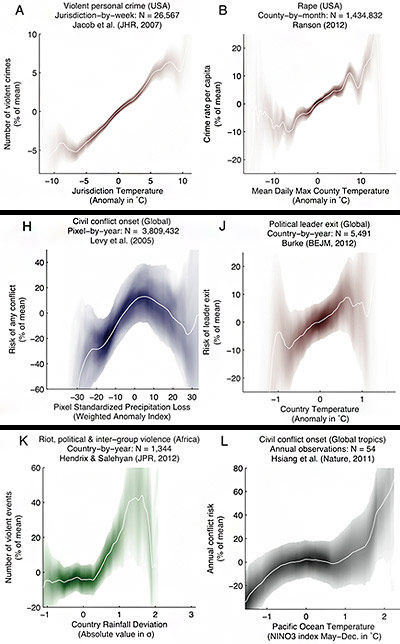
Warmer Weather and Precipitation Increase the Risk of Violence!
A newly published study from Princeton University and UC Berkeley reveals that slight increases in temperature and precipitation result in increased human conflict.
Should climate change trigger the upsurge in heat and rainfall that scientists predict, people may face a threat just as perilous and volatile as extreme weather — each other.
Researchers from Princeton University and the University of California-Berkeley report in the journal Science that even slight spikes in temperature and precipitation have greatly increased the risk of personal violence and social upheaval throughout human history. Projected onto an Earth that is expected to warm by 2 degrees Celsius by 2050, the authors suggest that more human conflict is a likely outcome of climate change.
The researchers analyzed 60 studies from a number of disciplines — including archaeology, criminology, economics and psychology — that have explored the connection between weather and violence in various parts of the world from about 10,000 BCE to the present day. During an 18-month period, the Princeton-Berkeley researchers reviewed those studies’ data — and often re-crunched raw numbers — to calculate the risk that violence would rise under hotter and wetter conditions.
They found that while climate is not the sole or primary cause of violence, it undeniably exacerbates existing social and interpersonal tension in all societies, regardless of wealth or stability. They found that 1 standard-deviation shift — the amount of change from the local norm — in heat or rainfall boosts the risk of a riot, civil war or ethnic conflict by an average of 14 percent. There is a 4 percent chance of a similarly sized upward creep in heat or rain sparking person-on-person violence such as rape, murder and assault. The researchers report that climate-change models predict an average of 2 to 4 standard-deviation shifts in global climate conditions by 2050.
Establishing a correlation between violence and climate change now allows policymakers and researchers to examine what causes it and how to intervene, said lead author Solomon Hsiang, who conducted the work as a postdoctoral research associate in the Program in Science, Technology and Environmental Policy in Princeton’s Woodrow Wilson School of Public and International Affairs.
Slight Spikes in Temperature and Precipitation Increase the Risk of Violence
The researchers analyzed 60 studies from a number of disciplines that have explored the connection between weather and violence in various parts of the world, and throughout human history. A sampling of existing results (graphed above) show a correlation between temperature on violent personal crime and rape in the United States (A, B); drought and global civil conflict (H); temperature and the ouster of leaders worldwide (J); deviation from normal rainfall and large-scale violence in Africa (K); and global civil conflict and the intensity of El Niño (L). The darker areas indicate a stronger connection between climate and violence. Panel titles indicate the type of violence studied, the location, the unit of analysis and sample size, and the study citation. (Image by Science/AAAS)
“We think that by collecting all the research together now, we’re pretty clearly establishing that there is a causal relationship between the climate and human conflict,” Hsiang said. “People have been skeptical up to now of an individual study here or there. But considering the body of work together, we can now show that these patterns are extremely general. It’s more of the rule than the exception.
“Whether there is a relationship between climate and conflict is not the question anymore. We now want to understand what’s causing it,” Hsiang said. “Once we understand what causes this correlation we can think about designing effective policies or institutions to manage or interrupt the link between climate and conflict.”
The existing research had essentially shown an overall link between climate conditions and these conflicts, but that link needed to be extracted from reams of figures from various disciplines in order for the research to reach general conclusions, Hsiang said. Hsiang, who is now an assistant professor at Berkeley’s Goldman School of Public Policy, worked with co-first author Marshall Burke, a doctoral candidate in Berkeley’s Department of Agricultural and Resource Economics, and Edward Miguel, the Oxfam Professor of Environmental and Resource Economics at Berkeley.
“We attained a huge amount of the data that was available and we used the same method on all of the data so that we could directly compare studies,” Hsiang said. “Once we did that, we saw that all of the results were actually highly consistent — previously they just weren’t being analyzed in a consistent way.”
The researchers examined three categories of conflict: “personal violence and crime,” which includes murder, assault, rape and domestic violence; “intergroup violence and political instability,” such as civil wars, riots, ethnic violence and land invasions; and “institutional breakdowns,” which are abrupt and major changes in governing institutions or, in extreme cases, the collapse of entire civilizations.
Extreme climatic conditions amplified violence in all three categories, regardless of geography, societal wealth or the time in history. An aberrant climate coincided with incidents including spikes in domestic violence in India and Australia; increased assaults and murders in the United States and Tanzania; ethnic violence in Europe and South Asia; land invasions in Brazil; police using force in the Netherlands; civil conflicts throughout the tropics; the collapse of ancient empires; and wars and displacement in Middle-Ages Europe.
“We find the same pattern over and over again, regardless of whether we look at data from Brazil, Somalia, China or the United States,” Miguel said. “We often think of modern society as largely independent of the environment, due to technological advances, but our findings challenge that notion. The climate appears to be a critical factor sustaining peace and wellbeing across human societies.”
And the climate does not have to deviate much to upset that peace and wellbeing, Burke said. The 1 standard-deviation shift he and his co-authors uncovered equates to a seemingly paltry change in weather: it’s roughly equal to warming an African country by 0.35°C, or by 0.63°F, for an entire year, or warming a county in the United States by 2.9°C, or by 5.2°F, for a given month.
“These are pretty moderate changes, but they have a sizable impact on those societies,” Burke said. Many global climate models project global temperature increases of at least 2 degrees Celsius over the next several decades, which, when combined with the Princeton-Berkeley findings, suggest that warming at that level could increase the risk of civil war in many countries by more than 50 percent, the researchers said.
The factors that interact with climate to produce chaos and discord are varied. A popular theory is that drought and flooding cripple an economy, especially one based on agriculture or that is already weak. When people look for someone to blame, governmental leaders have a target on their backs, as do any people with whom there is existing tension, such as an ethnic minority or a migrant group from stricken hinterlands.
But sometimes heat just makes people more aggressive. The researchers found that personal violence was far more influenced by a leap in temperature. Hsiang and his colleagues cite studies that equate excessive heat with spikes of violence in the United States and other stable, wealthy countries. For example, a 1994 study found that two groups of police officers undergoing the exact same simulation training were more likely to draw their weapons if the room was uncomfortably warm.
“There’s a large amount of evidence that environmental conditions actually change a person’s perception of their own condition, or they also can change the likelihood of people using violence or aggressive action to accomplish some goal,” Hsiang said.
“Our study is not saying that climate is the only cause of conflict, and there’s no conflict that we think should be wholly attributed to some specific climatic event,” he said. “Every conflict has roots in interpersonal and intergroup relations. What we’re trying to point out is that climate is one of the critical factors the affect how things escalate, and if they escalate to the point of violence.”
The paper, “Quantifying the influence of climate on human conflict,” was published in Science Aug. 1. The study was funded by a Princeton University postdoctoral fellowship in science, technology and environmental policy, a Graduate Research Fellowship from the National Science Foundation, and the Oxfam Faculty Chair in Environmental and Resource Economics at Berkeley.
Publication: Solomon M. Hsiang, et al., “Quantifying the Influence of Climate on Human Conflict,” Science, 2013; DOI: 10.1126/science.1235367
Source: Morgan Kelly, Princeton University
A newly published study from Princeton University and UC Berkeley reveals that slight increases in temperature and precipitation result in increased human conflict.
Should climate change trigger the upsurge in heat and rainfall that scientists predict, people may face a threat just as perilous and volatile as extreme weather — each other.
Researchers from Princeton University and the University of California-Berkeley report in the journal Science that even slight spikes in temperature and precipitation have greatly increased the risk of personal violence and social upheaval throughout human history. Projected onto an Earth that is expected to warm by 2 degrees Celsius by 2050, the authors suggest that more human conflict is a likely outcome of climate change.
The researchers analyzed 60 studies from a number of disciplines — including archaeology, criminology, economics and psychology — that have explored the connection between weather and violence in various parts of the world from about 10,000 BCE to the present day. During an 18-month period, the Princeton-Berkeley researchers reviewed those studies’ data — and often re-crunched raw numbers — to calculate the risk that violence would rise under hotter and wetter conditions.
They found that while climate is not the sole or primary cause of violence, it undeniably exacerbates existing social and interpersonal tension in all societies, regardless of wealth or stability. They found that 1 standard-deviation shift — the amount of change from the local norm — in heat or rainfall boosts the risk of a riot, civil war or ethnic conflict by an average of 14 percent. There is a 4 percent chance of a similarly sized upward creep in heat or rain sparking person-on-person violence such as rape, murder and assault. The researchers report that climate-change models predict an average of 2 to 4 standard-deviation shifts in global climate conditions by 2050.
Establishing a correlation between violence and climate change now allows policymakers and researchers to examine what causes it and how to intervene, said lead author Solomon Hsiang, who conducted the work as a postdoctoral research associate in the Program in Science, Technology and Environmental Policy in Princeton’s Woodrow Wilson School of Public and International Affairs.
Slight Spikes in Temperature and Precipitation Increase the Risk of Violence
The researchers analyzed 60 studies from a number of disciplines that have explored the connection between weather and violence in various parts of the world, and throughout human history. A sampling of existing results (graphed above) show a correlation between temperature on violent personal crime and rape in the United States (A, B); drought and global civil conflict (H); temperature and the ouster of leaders worldwide (J); deviation from normal rainfall and large-scale violence in Africa (K); and global civil conflict and the intensity of El Niño (L). The darker areas indicate a stronger connection between climate and violence. Panel titles indicate the type of violence studied, the location, the unit of analysis and sample size, and the study citation. (Image by Science/AAAS)
“We think that by collecting all the research together now, we’re pretty clearly establishing that there is a causal relationship between the climate and human conflict,” Hsiang said. “People have been skeptical up to now of an individual study here or there. But considering the body of work together, we can now show that these patterns are extremely general. It’s more of the rule than the exception.
“Whether there is a relationship between climate and conflict is not the question anymore. We now want to understand what’s causing it,” Hsiang said. “Once we understand what causes this correlation we can think about designing effective policies or institutions to manage or interrupt the link between climate and conflict.”
The existing research had essentially shown an overall link between climate conditions and these conflicts, but that link needed to be extracted from reams of figures from various disciplines in order for the research to reach general conclusions, Hsiang said. Hsiang, who is now an assistant professor at Berkeley’s Goldman School of Public Policy, worked with co-first author Marshall Burke, a doctoral candidate in Berkeley’s Department of Agricultural and Resource Economics, and Edward Miguel, the Oxfam Professor of Environmental and Resource Economics at Berkeley.
“We attained a huge amount of the data that was available and we used the same method on all of the data so that we could directly compare studies,” Hsiang said. “Once we did that, we saw that all of the results were actually highly consistent — previously they just weren’t being analyzed in a consistent way.”
The researchers examined three categories of conflict: “personal violence and crime,” which includes murder, assault, rape and domestic violence; “intergroup violence and political instability,” such as civil wars, riots, ethnic violence and land invasions; and “institutional breakdowns,” which are abrupt and major changes in governing institutions or, in extreme cases, the collapse of entire civilizations.
Extreme climatic conditions amplified violence in all three categories, regardless of geography, societal wealth or the time in history. An aberrant climate coincided with incidents including spikes in domestic violence in India and Australia; increased assaults and murders in the United States and Tanzania; ethnic violence in Europe and South Asia; land invasions in Brazil; police using force in the Netherlands; civil conflicts throughout the tropics; the collapse of ancient empires; and wars and displacement in Middle-Ages Europe.
“We find the same pattern over and over again, regardless of whether we look at data from Brazil, Somalia, China or the United States,” Miguel said. “We often think of modern society as largely independent of the environment, due to technological advances, but our findings challenge that notion. The climate appears to be a critical factor sustaining peace and wellbeing across human societies.”
And the climate does not have to deviate much to upset that peace and wellbeing, Burke said. The 1 standard-deviation shift he and his co-authors uncovered equates to a seemingly paltry change in weather: it’s roughly equal to warming an African country by 0.35°C, or by 0.63°F, for an entire year, or warming a county in the United States by 2.9°C, or by 5.2°F, for a given month.
“These are pretty moderate changes, but they have a sizable impact on those societies,” Burke said. Many global climate models project global temperature increases of at least 2 degrees Celsius over the next several decades, which, when combined with the Princeton-Berkeley findings, suggest that warming at that level could increase the risk of civil war in many countries by more than 50 percent, the researchers said.
The factors that interact with climate to produce chaos and discord are varied. A popular theory is that drought and flooding cripple an economy, especially one based on agriculture or that is already weak. When people look for someone to blame, governmental leaders have a target on their backs, as do any people with whom there is existing tension, such as an ethnic minority or a migrant group from stricken hinterlands.
But sometimes heat just makes people more aggressive. The researchers found that personal violence was far more influenced by a leap in temperature. Hsiang and his colleagues cite studies that equate excessive heat with spikes of violence in the United States and other stable, wealthy countries. For example, a 1994 study found that two groups of police officers undergoing the exact same simulation training were more likely to draw their weapons if the room was uncomfortably warm.
“There’s a large amount of evidence that environmental conditions actually change a person’s perception of their own condition, or they also can change the likelihood of people using violence or aggressive action to accomplish some goal,” Hsiang said.
“Our study is not saying that climate is the only cause of conflict, and there’s no conflict that we think should be wholly attributed to some specific climatic event,” he said. “Every conflict has roots in interpersonal and intergroup relations. What we’re trying to point out is that climate is one of the critical factors the affect how things escalate, and if they escalate to the point of violence.”
The paper, “Quantifying the influence of climate on human conflict,” was published in Science Aug. 1. The study was funded by a Princeton University postdoctoral fellowship in science, technology and environmental policy, a Graduate Research Fellowship from the National Science Foundation, and the Oxfam Faculty Chair in Environmental and Resource Economics at Berkeley.
Publication: Solomon M. Hsiang, et al., “Quantifying the Influence of Climate on Human Conflict,” Science, 2013; DOI: 10.1126/science.1235367
Source: Morgan Kelly, Princeton University

Sebastiaan de Boorder
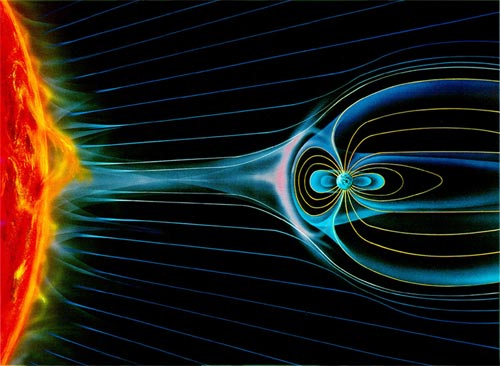
The Sun's Magnetic Field is about to Flip!
August 5, 2013: Something big is about to happen on the sun. According to measurements from NASA-supported observatories, the sun's vast magnetic field is about to flip.
"It looks like we're no more than 3 to 4 months away from a complete field reversal," says solar physicist Todd Hoeksema of Stanford University. "This change will have ripple effects throughout the solar system."
The sun's magnetic field changes polarity approximately every 11 years. It happens at the peak of each solar cycle as the sun's inner magnetic dynamo re-organizes itself. The coming reversal will mark the midpoint of Solar Cycle 24. Half of 'Solar Max' will be behind us, with half yet to come.
Hoeksema is the director of Stanford's Wilcox Solar Observatory, one of the few observatories in the world that monitor the sun's polar magnetic fields. The poles are a herald of change. Just as Earth scientists watch our planet's polar regions for signs of climate change, solar physicists do the same thing for the sun. Magnetograms at Wilcox have been tracking the sun's polar magnetism since 1976, and they have recorded three grand reversals—with a fourth in the offing.
Astronomers at the Wilcox Solar Observatory (WSO) monitor the sun's global magnetic field on a daily basis. WSO home page
Solar physicist Phil Scherrer, also at Stanford, describes what happens: "The sun's polar magnetic fields weaken, go to zero, and then emerge again with the opposite polarity. This is a regular part of the solar cycle."
A reversal of the sun's magnetic field is, literally, a big event. The domain of the sun's magnetic influence (also known as the "heliosphere") extends billions of kilometers beyond Pluto. Changes to the field's polarity ripple all the way out to the Voyager probes, on the doorstep of interstellar space.
When solar physicists talk about solar field reversals, their conversation often centers on the "current sheet." The current sheet is a sprawling surface jutting outward from the sun's equator where the sun's slowly-rotating magnetic field induces an electrical current. The current itself is small, only one ten-billionth of an amp per square meter (0.0000000001 amps/m2), but there’s a lot of it: the amperage flows through a region 10,000 km thick and billions of kilometers wide. Electrically speaking, the entire heliosphere is organized around this enormous sheet.
During field reversals, the current sheet becomes very wavy. Scherrer likens the undulations to the seams on a baseball. As Earth orbits the sun, we dip in and out of the current sheet. Transitions from one side to another can stir up stormy space weather around our planet.
Cosmic rays are also affected. These are high-energy particles accelerated to nearly light speed by supernova explosions and other violent events in the galaxy. Cosmic rays are a danger to astronauts and space probes, and some researchers say they might affect the cloudiness and climate of Earth. The current sheet acts as a barrier to cosmic rays, deflecting them as they attempt to penetrate the inner solar system. A wavy, crinkly sheet acts as a better shield against these energetic particles from deep space.
As the field reversal approaches, data from Wilcox show that the sun's two hemispheres are out of synch.
"The sun's north pole has already changed sign, while the south pole is racing to catch up," says Scherrer. "Soon, however, both poles will be reversed, and the second half of Solar Max will be underway."
When that happens, Hoeksema and Scherrer will share the news with their colleagues and the public.
Stay tuned to Science@NASA for updates.
August 5, 2013: Something big is about to happen on the sun. According to measurements from NASA-supported observatories, the sun's vast magnetic field is about to flip.
"It looks like we're no more than 3 to 4 months away from a complete field reversal," says solar physicist Todd Hoeksema of Stanford University. "This change will have ripple effects throughout the solar system."
The sun's magnetic field changes polarity approximately every 11 years. It happens at the peak of each solar cycle as the sun's inner magnetic dynamo re-organizes itself. The coming reversal will mark the midpoint of Solar Cycle 24. Half of 'Solar Max' will be behind us, with half yet to come.
Hoeksema is the director of Stanford's Wilcox Solar Observatory, one of the few observatories in the world that monitor the sun's polar magnetic fields. The poles are a herald of change. Just as Earth scientists watch our planet's polar regions for signs of climate change, solar physicists do the same thing for the sun. Magnetograms at Wilcox have been tracking the sun's polar magnetism since 1976, and they have recorded three grand reversals—with a fourth in the offing.
Astronomers at the Wilcox Solar Observatory (WSO) monitor the sun's global magnetic field on a daily basis. WSO home page
Solar physicist Phil Scherrer, also at Stanford, describes what happens: "The sun's polar magnetic fields weaken, go to zero, and then emerge again with the opposite polarity. This is a regular part of the solar cycle."
A reversal of the sun's magnetic field is, literally, a big event. The domain of the sun's magnetic influence (also known as the "heliosphere") extends billions of kilometers beyond Pluto. Changes to the field's polarity ripple all the way out to the Voyager probes, on the doorstep of interstellar space.
When solar physicists talk about solar field reversals, their conversation often centers on the "current sheet." The current sheet is a sprawling surface jutting outward from the sun's equator where the sun's slowly-rotating magnetic field induces an electrical current. The current itself is small, only one ten-billionth of an amp per square meter (0.0000000001 amps/m2), but there’s a lot of it: the amperage flows through a region 10,000 km thick and billions of kilometers wide. Electrically speaking, the entire heliosphere is organized around this enormous sheet.
During field reversals, the current sheet becomes very wavy. Scherrer likens the undulations to the seams on a baseball. As Earth orbits the sun, we dip in and out of the current sheet. Transitions from one side to another can stir up stormy space weather around our planet.
Cosmic rays are also affected. These are high-energy particles accelerated to nearly light speed by supernova explosions and other violent events in the galaxy. Cosmic rays are a danger to astronauts and space probes, and some researchers say they might affect the cloudiness and climate of Earth. The current sheet acts as a barrier to cosmic rays, deflecting them as they attempt to penetrate the inner solar system. A wavy, crinkly sheet acts as a better shield against these energetic particles from deep space.
As the field reversal approaches, data from Wilcox show that the sun's two hemispheres are out of synch.
"The sun's north pole has already changed sign, while the south pole is racing to catch up," says Scherrer. "Soon, however, both poles will be reversed, and the second half of Solar Max will be underway."
When that happens, Hoeksema and Scherrer will share the news with their colleagues and the public.
Stay tuned to Science@NASA for updates.

Sebastiaan de Boorder
Rare find backs shape-shifting neutrino - scientists.
ROME — Physicists announced further proof Wednesday for a theory that mysterious particles called neutrinos which go "missing" on the journey from the Sun to Earth are in fact shape-shifting along the way, arriving undetected.
The evidence: a muon-type neutrino dispatched from the CERN research laboratory near Geneva had arrived as a tau neutrino at the INFN Gran Sasso Laboratory in Italy, 730 kilometres (450 miles) away, they said in a statement.
It is only the third time that the mutation has been observed by the OPERA experiment, an international project launched in 2001 specifically to detect the bizarre change.
"Its observation confirms something scientists have been studying for more than 40 years: the fact that neutrinos induced by cosmic rays impinging on the Earth atmosphere arrive far fewer than expected," said the statement.
A Nobel-winning 1969 hypothesis shed light on the mystery by suggesting the subatomic particles were in fact changing type.
There are three types, or "flavours," of neutrino -- an electrically-neutral subatomic particle that rarely interacts with matter.
Under the prevailing Standard Model of physics, neutrinos cannot have mass, but the outcome of the experiment suggests that in fact they do.
For the OPERA experiment, a beam of neutrinos produced at CERN is sent to the Gran Sasso underground laboratory, which houses a 4,000-tonne detector.
The detector scans the arriving particles for tau neutrinos, knowing that only muons had set out from CERN.
Finding a tau neutrino proves that "oscillation" or change happened along the way.
OPERA detected its first tau neutrino in 2010 and the second in 2012.
The observation of a third tau neutrino "is an important confirmation of the two previous observations", OPERA scientists Giovanni De Lellis said in a statement.
"From a statistical point of view, the observation of three tau neutrino candidates provides the evidence of oscillations in the muon-to-tau neutrino channel."
The search for tau neutrinos will continue for another two years, said the statement.
Copyright © 2013 AFP. All rights reserved.
ROME — Physicists announced further proof Wednesday for a theory that mysterious particles called neutrinos which go "missing" on the journey from the Sun to Earth are in fact shape-shifting along the way, arriving undetected.
The evidence: a muon-type neutrino dispatched from the CERN research laboratory near Geneva had arrived as a tau neutrino at the INFN Gran Sasso Laboratory in Italy, 730 kilometres (450 miles) away, they said in a statement.
It is only the third time that the mutation has been observed by the OPERA experiment, an international project launched in 2001 specifically to detect the bizarre change.
"Its observation confirms something scientists have been studying for more than 40 years: the fact that neutrinos induced by cosmic rays impinging on the Earth atmosphere arrive far fewer than expected," said the statement.
A Nobel-winning 1969 hypothesis shed light on the mystery by suggesting the subatomic particles were in fact changing type.
There are three types, or "flavours," of neutrino -- an electrically-neutral subatomic particle that rarely interacts with matter.
Under the prevailing Standard Model of physics, neutrinos cannot have mass, but the outcome of the experiment suggests that in fact they do.
For the OPERA experiment, a beam of neutrinos produced at CERN is sent to the Gran Sasso underground laboratory, which houses a 4,000-tonne detector.
The detector scans the arriving particles for tau neutrinos, knowing that only muons had set out from CERN.
Finding a tau neutrino proves that "oscillation" or change happened along the way.
OPERA detected its first tau neutrino in 2010 and the second in 2012.
The observation of a third tau neutrino "is an important confirmation of the two previous observations", OPERA scientists Giovanni De Lellis said in a statement.
"From a statistical point of view, the observation of three tau neutrino candidates provides the evidence of oscillations in the muon-to-tau neutrino channel."
The search for tau neutrinos will continue for another two years, said the statement.
Copyright © 2013 AFP. All rights reserved.
Sebastiaan de Boorder
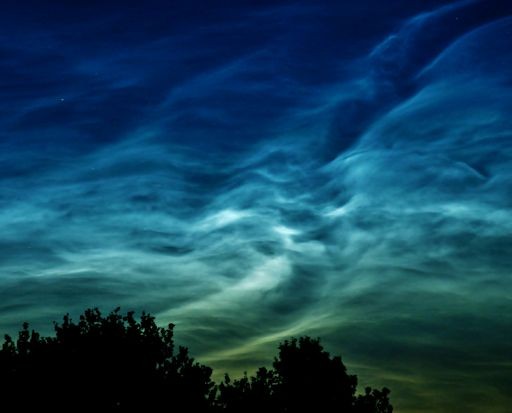
NOCTILUCENT CLOUDS: Sky watchers across northern Europe are reporting a vivid display of noctilucent clouds on July 31st. Nické Eriksson sends this sunset image from Karlstad, Sweden:
"It reminded me of a magic carpet," says Eriksson.
"It reminded me of a magic carpet," says Eriksson.

Sebastiaan de Boorder
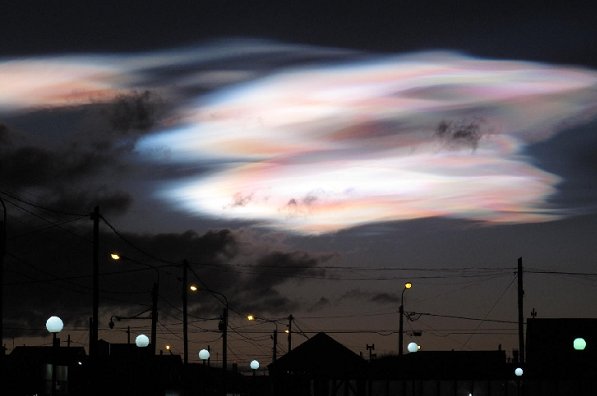
Normally the coming of August signals a downturn in sightings of noctilucent clouds (NLCs). The northern noctilucent daisy is brightest in June and July. This year, however, might be different. So far, 2013 has been one of the best years ever for these strange clouds at the edge of space. Sightings could continue long after than usual end of NLC season.
Now people in Argentina also start to see them : see image below!
Observing tips: Look west 30 to 60 minutes after sunset when the sun has dipped 6o to 16o below the horizon. If you see luminous blue-white tendrils spreading across the sky, you've probably spotted a noctilucent cloud.
Now people in Argentina also start to see them : see image below!
Observing tips: Look west 30 to 60 minutes after sunset when the sun has dipped 6o to 16o below the horizon. If you see luminous blue-white tendrils spreading across the sky, you've probably spotted a noctilucent cloud.

Sebastiaan de Boorder

Check out what NASA's Cassini spacecraft first noticed in 2007. There is a large rotating hexagon circling the north pole of Saturn.

Sebastiaan de Boorder
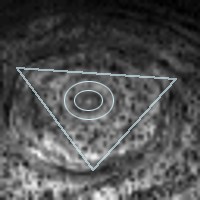
This isn't some conspiracy theory. It's not some sort of far-fetched interpretation of random organic structure. It is quite clearly a massive hexagon, and it's circling the north pole of Saturn as we speak. And by "massive", I mean this hexagon is larger than the planet Earth.
Straight from the NASA website: "This is a very strange feature, lying in a precise geometric fashion with six nearly equally straight sides," said Kevin Baines, atmospheric expert and member of Cassini's visual and infrared mapping spectrometer team at NASA's Jet Propulsion Laboratory, Pasadena, Calif. "We've never seen anything like this on any other planet. Indeed, Saturn's thick atmosphere where circularly-shaped waves and convective cells dominate is perhaps the last place you'd expect to see such a six-sided geometric figure, yet there it is."
The hexagon, according to NASA, is 60 miles thick (deep) and an astonishing 15,000 miles wide.
That means four Earths would fit inside it. Yes, it's really that big. And of course, it seems entirely unnatural. Clouds don't form hexagon shapes and then maintain those structures as the edges orbit the center. Looking at this shape, it is difficult to explain it as "natural."
But that's not all there is to see here.
The all-seeing eye pyramid inside the hexagon
As I was studying this animation from NASA, something struck me as particularly interesting. Inside the hexagon there's a three-sided pyramid shape. It appears quite clearly as a lighter-shade triangle set against the background of the hexagon. Imagine a pyramid placed on top of the hexagon and you'll see it.
There's even more: Inside the pyramid is the shape of the all-seeing eye. You can clearly see it in the center of the pyramid shape, which is inside the hexagon
In it, you can just barely make out the shape of an inverted pyramid, plus two concentric circles in the center. Here's an overlay of lines showing the structure of the pyramid, plus the all-seeing eye:
Straight from the NASA website: "This is a very strange feature, lying in a precise geometric fashion with six nearly equally straight sides," said Kevin Baines, atmospheric expert and member of Cassini's visual and infrared mapping spectrometer team at NASA's Jet Propulsion Laboratory, Pasadena, Calif. "We've never seen anything like this on any other planet. Indeed, Saturn's thick atmosphere where circularly-shaped waves and convective cells dominate is perhaps the last place you'd expect to see such a six-sided geometric figure, yet there it is."
The hexagon, according to NASA, is 60 miles thick (deep) and an astonishing 15,000 miles wide.
That means four Earths would fit inside it. Yes, it's really that big. And of course, it seems entirely unnatural. Clouds don't form hexagon shapes and then maintain those structures as the edges orbit the center. Looking at this shape, it is difficult to explain it as "natural."
But that's not all there is to see here.
The all-seeing eye pyramid inside the hexagon
As I was studying this animation from NASA, something struck me as particularly interesting. Inside the hexagon there's a three-sided pyramid shape. It appears quite clearly as a lighter-shade triangle set against the background of the hexagon. Imagine a pyramid placed on top of the hexagon and you'll see it.
There's even more: Inside the pyramid is the shape of the all-seeing eye. You can clearly see it in the center of the pyramid shape, which is inside the hexagon
In it, you can just barely make out the shape of an inverted pyramid, plus two concentric circles in the center. Here's an overlay of lines showing the structure of the pyramid, plus the all-seeing eye:

Sebastiaan de Boorder
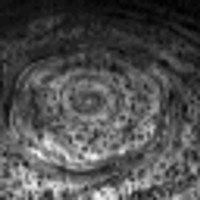
The all-seeing eye and the pyramid
Do you recognize this all-seeing eye with the pyramid? If not, just whip out a dollar bill from your pocket and glance at the back. There it is!
Yes, your U.S. currency contains the exact same image: An all-seeing eye, centered inside the top of the pyramid, looking over you from the back of a dollar bill.
Do you recognize this all-seeing eye with the pyramid? If not, just whip out a dollar bill from your pocket and glance at the back. There it is!
Yes, your U.S. currency contains the exact same image: An all-seeing eye, centered inside the top of the pyramid, looking over you from the back of a dollar bill.

Sebastiaan de Boorder
Reality check
Please note what you're thinking right now as you're reading this. So far, I have not presented anything other than what is evident. There is a spinning hexagon of clouds on Saturn's north pole. Inside the hexagon is a triangle (pyramid). Inside the triangle are two concentric circles that look a lot like a human eye.
This shape closely resembles a pyramid with the all-seeing eye on the back of the U.S. dollar.
Notice I haven't mentioned anything about any conspiracy, or aliens, or anything of that kind. These are just observations of the universe around us.
Granted, they are fascinating observations. In fact, if you told most people what I've printed here in this article so far, they would think you were absolutely nuts.
And yet all I've done so far is republished NASA photos from the Cassini spacecraft and shown pictures from the back of U.S. currency. I've also pointed out some eerie similarities between the two.
But anyone with even half a brain, upon seeing these pictures, would begin to wonder: Is this just a coincidence? And why is there a 15,000-mile wide spinning hexagon on Saturn in the first place?
I've mentioned this to quite a few people, and no one I talked to was even aware of this. So what's it doing there?
Natural phenomenon or intelligent design?
There are really one two possibilities for explaining the giant hexagon on Saturn: It is either a natural phenomenon or it was intelligently designed. (Well, I suppose there's a third possibility: That the whole thing is some sort of grand NASA hoax and the pictures were faked... but to what end?)
I can't wait to see the debates about this on our Facebook page, by the way, because "intelligently designed" could include anything: God, an alien race, a supernatural being, a previous Earthly civilization, a civilization from a parallel universe... who knows?
"Intelligently designed" means some conscious, intelligent being (or group of beings) intentionally created it. If so, you'd have to wonder: For what purpose? What would a giant spinning hexagon on Saturn actually accomplish?
Cymatics and the physical structure of sound
The far more likely explanation for the giant hexagon on Saturn may be that it is a natural phenomenon. And the only phenomenon I'm familiar with that might explain this involves the field of cymatics.
Cymatics is the study of how sound can alter the physical structure of materials, creating interesting structural patterns. To see this for yourself, you can turn a stereo speaker on its edge (with the speaker facing up), then place a liquid pudding of corn starch and water on top of a layer of plastic wrap, on top of the speaker. When you crank up the music, the corn starch creates bizarre and fascinating shapes due to the expression of the structure of the sound.
Please note what you're thinking right now as you're reading this. So far, I have not presented anything other than what is evident. There is a spinning hexagon of clouds on Saturn's north pole. Inside the hexagon is a triangle (pyramid). Inside the triangle are two concentric circles that look a lot like a human eye.
This shape closely resembles a pyramid with the all-seeing eye on the back of the U.S. dollar.
Notice I haven't mentioned anything about any conspiracy, or aliens, or anything of that kind. These are just observations of the universe around us.
Granted, they are fascinating observations. In fact, if you told most people what I've printed here in this article so far, they would think you were absolutely nuts.
And yet all I've done so far is republished NASA photos from the Cassini spacecraft and shown pictures from the back of U.S. currency. I've also pointed out some eerie similarities between the two.
But anyone with even half a brain, upon seeing these pictures, would begin to wonder: Is this just a coincidence? And why is there a 15,000-mile wide spinning hexagon on Saturn in the first place?
I've mentioned this to quite a few people, and no one I talked to was even aware of this. So what's it doing there?
Natural phenomenon or intelligent design?
There are really one two possibilities for explaining the giant hexagon on Saturn: It is either a natural phenomenon or it was intelligently designed. (Well, I suppose there's a third possibility: That the whole thing is some sort of grand NASA hoax and the pictures were faked... but to what end?)
I can't wait to see the debates about this on our Facebook page, by the way, because "intelligently designed" could include anything: God, an alien race, a supernatural being, a previous Earthly civilization, a civilization from a parallel universe... who knows?
"Intelligently designed" means some conscious, intelligent being (or group of beings) intentionally created it. If so, you'd have to wonder: For what purpose? What would a giant spinning hexagon on Saturn actually accomplish?
Cymatics and the physical structure of sound
The far more likely explanation for the giant hexagon on Saturn may be that it is a natural phenomenon. And the only phenomenon I'm familiar with that might explain this involves the field of cymatics.
Cymatics is the study of how sound can alter the physical structure of materials, creating interesting structural patterns. To see this for yourself, you can turn a stereo speaker on its edge (with the speaker facing up), then place a liquid pudding of corn starch and water on top of a layer of plastic wrap, on top of the speaker. When you crank up the music, the corn starch creates bizarre and fascinating shapes due to the expression of the structure of the sound.
Sebastiaan de Boorder
I've been thinking that the giant hexagon on Saturn could theoretically be caused by very low-frequency sound waves emanating from some sort of geological action on the planet's surface. Perhaps these sound waves are being focused toward the north pole of the planet in much the same way that earthquake shockwaves can "bounce" off subterranean geological features. These sound waves could theoretically create a "cymatic" effect that we're seeing as a giant hexagon swirling around the pole.
It sounds far-fetched, I know. But not nearly as far-fetch as "aliens built it." When it comes to bizarre phenomena like this, all the explanations sound far-fetched because the universe is more bizarre than we imagine.
You can come up with your own theory to explain all this, but make no mistake: There is a giant hexagon of clouds 15,000 miles wide swirling around the north pole of Saturn, and even NASA has no idea why or how it got there.
Is this possibly a "natural" event taking place on a massive scale? If it's natural, it would demonstrate that nature can create some astonishingly complex (and large-scale) designs in the worlds around us. That's particularly interesting because the FDA believes nature is incapable of creating even a single plant-based nutrient that has any beneficial effect whatsoever on the human body. "There's no such thing as any vitamin or mineral that can prevent, cure or reverse any disease or disease symptom," the FDA seems to insist.
There's a lot of denial in Washington about the power and "creativity" of nature. Maybe those folks should look toward the heavens and take note of what's really happening in our universe... because some of it is pretty darned spectacular.
Just ask NASA.
by Mike Adams, the Health Ranger
Editor of NaturalNews.com
It sounds far-fetched, I know. But not nearly as far-fetch as "aliens built it." When it comes to bizarre phenomena like this, all the explanations sound far-fetched because the universe is more bizarre than we imagine.
You can come up with your own theory to explain all this, but make no mistake: There is a giant hexagon of clouds 15,000 miles wide swirling around the north pole of Saturn, and even NASA has no idea why or how it got there.
Is this possibly a "natural" event taking place on a massive scale? If it's natural, it would demonstrate that nature can create some astonishingly complex (and large-scale) designs in the worlds around us. That's particularly interesting because the FDA believes nature is incapable of creating even a single plant-based nutrient that has any beneficial effect whatsoever on the human body. "There's no such thing as any vitamin or mineral that can prevent, cure or reverse any disease or disease symptom," the FDA seems to insist.
There's a lot of denial in Washington about the power and "creativity" of nature. Maybe those folks should look toward the heavens and take note of what's really happening in our universe... because some of it is pretty darned spectacular.
Just ask NASA.
by Mike Adams, the Health Ranger
Editor of NaturalNews.com
Sebastiaan de Boorder
The stock market is not crashing yet, but there are lots of other market crashes happening in the financial world right now. Just like we saw back in 2008, it is taking stocks a little bit of extra time to catch up with economic reality. But almost everywhere else you look, there are signs that a financial avalanche has begun. Bitcoins are crashing, gold and silver are plunging, the price of oil and the overall demand for energy continue to decline, markets all over Europe are collapsing and consumer confidence in the United States just had the biggest miss relative to expectations that has ever been recorded. In many ways, all of this is extremely reminiscent of 2008. Other than the Bitcoin collapse, almost everything else that is happening now also happened back then. So does that mean that a horrible stock market crash is coming as well? Without a doubt, one is coming at some point. The only question is whether it will be sooner or later. Meanwhile, there are a whole lot of other economic crashes that deserve out attention at the moment.
The following are 11 economic crashes that are happening RIGHT NOW…
#1 Bitcoins
As I write this, the price of Bitcoins has fallen more than 70 percent from where it was on Wednesday. This is one of the reasons why I have never recommended Bitcoins to anyone. Yes, alternative currencies are a good thing, but there are a lot of big problems with Bitcoins. Why would anyone want to invest in a currency that could lose 70 percent of its purchasing power in just two days? Why would anyone want to invest in a currency where a single person can arbitrarily decide to suspend trading in that currency at any time?
#2 Gold
The price of gold was down by about 4 percent on Friday. Gold has now fallen below $1500 an ounce for the first time since July 2011. Overall, the price of gold has fallen by about 10 percent since the beginning of the year, and it is about 22 percent below the record high set back in September 2011.
Yes, the price of gold is likely being pushed down by the banksters. And yes, gold is a fantastic investment for the long-term. But there will be times when the price of gold does fall dramatically just like we saw back in 2008.
#3 Silver
The price of silver fell by about 5 percent on Friday. If it falls much more it is going to be at a level that presents a historically good buying opportunity.
Just like gold, there will be times when the price of silver swings dramatically. But the truth is that silver is probably an even better long-term investment than gold is.
#4 Oil
The price of oil declined by about 3 percent on Friday. Many will consider this a positive thing, but just remember what happened back in 2008. Back then, the price of oil dropped like a rock. If the price of oil gets below $80, that could very well be a clear signal that a major economic crisis is about to happen.
#5 Consumer Confidence
As I mentioned above, consumer confidence in the U.S. just had its biggest miss relative to expectations that has ever been recorded. The following is from an article posted on Zero Hedge on Friday…
#6 Retirement Accounts
According to Wells Fargo, the number of Americans taking loans from their 401(k) accounts has risen by 28 percent over the past year…
#7 Casino Spending
Casino spending is declining again. Many people (including myself) would consider this to be a good thing, but casino spending is also one of the most reliable indicators about the overall health of the economy. Remember, casino spending crashed during the last financial crisis as well. That is why it is so alarming that casino spending is now back to levels that we have not seen since the last recession.
#8 Employment In Greece
Over in Europe, things just continue to get worse. According to numbers that were just released, the unemployment rate in Greece has soared to 27.2 percent, which was up from 25.7 percent the previous month. That means that the unemployment rate in Greece rose by 1.5 percent in just a single month. That is not just a crash – that is an avalanche of unemployment.
#9 European Financial Stocks
European financial stocks have been hit particularly hard lately. And for good reason actually – most of the major banks in Europe are essentially insolvent at this point. This week, European financial stocks fell to seven month lows, and this is probably only just the beginning.
#10 Spanish Bankruptcies
According to Reuters, the number of Spanish companies going bankrupt has risen by 45 percent over the past year…
#11 Demand For Energy
Just like we saw back in 2008, the overall demand for energy in the United States is falling rapidly. There are some shocking charts that prove this that were recently posted on Zero Hedge that you can find right here.
http://www.zerohedge.com/news/2013-04-06/these-charts-better-not-represent-true-state-us-economy
Yes, it is good for people to use a bit less energy, but it is also a clear indication that economic activity is really starting to slow down.
But despite everything that you have just read, the Dow and the S&P 500 have been setting new record highs.
And if you listen to the mainstream media, you would think that this stock market bubble can continue indefinitely.
Fortunately, there are a few voices of reason out there. For example, just check out what Marc Faber recently told CNBC…
http://www.cnbc.com/id/100623607
So what do you think will happen for the rest of the year?
Do you think that the good times will continue to roll, or do you believe that the bubble is about to burst?
By: The Daily Sheeple
The following are 11 economic crashes that are happening RIGHT NOW…
#1 Bitcoins
As I write this, the price of Bitcoins has fallen more than 70 percent from where it was on Wednesday. This is one of the reasons why I have never recommended Bitcoins to anyone. Yes, alternative currencies are a good thing, but there are a lot of big problems with Bitcoins. Why would anyone want to invest in a currency that could lose 70 percent of its purchasing power in just two days? Why would anyone want to invest in a currency where a single person can arbitrarily decide to suspend trading in that currency at any time?
#2 Gold
The price of gold was down by about 4 percent on Friday. Gold has now fallen below $1500 an ounce for the first time since July 2011. Overall, the price of gold has fallen by about 10 percent since the beginning of the year, and it is about 22 percent below the record high set back in September 2011.
Yes, the price of gold is likely being pushed down by the banksters. And yes, gold is a fantastic investment for the long-term. But there will be times when the price of gold does fall dramatically just like we saw back in 2008.
#3 Silver
The price of silver fell by about 5 percent on Friday. If it falls much more it is going to be at a level that presents a historically good buying opportunity.
Just like gold, there will be times when the price of silver swings dramatically. But the truth is that silver is probably an even better long-term investment than gold is.
#4 Oil
The price of oil declined by about 3 percent on Friday. Many will consider this a positive thing, but just remember what happened back in 2008. Back then, the price of oil dropped like a rock. If the price of oil gets below $80, that could very well be a clear signal that a major economic crisis is about to happen.
#5 Consumer Confidence
As I mentioned above, consumer confidence in the U.S. just had its biggest miss relative to expectations that has ever been recorded. The following is from an article posted on Zero Hedge on Friday…
#6 Retirement Accounts
According to Wells Fargo, the number of Americans taking loans from their 401(k) accounts has risen by 28 percent over the past year…
#7 Casino Spending
Casino spending is declining again. Many people (including myself) would consider this to be a good thing, but casino spending is also one of the most reliable indicators about the overall health of the economy. Remember, casino spending crashed during the last financial crisis as well. That is why it is so alarming that casino spending is now back to levels that we have not seen since the last recession.
#8 Employment In Greece
Over in Europe, things just continue to get worse. According to numbers that were just released, the unemployment rate in Greece has soared to 27.2 percent, which was up from 25.7 percent the previous month. That means that the unemployment rate in Greece rose by 1.5 percent in just a single month. That is not just a crash – that is an avalanche of unemployment.
#9 European Financial Stocks
European financial stocks have been hit particularly hard lately. And for good reason actually – most of the major banks in Europe are essentially insolvent at this point. This week, European financial stocks fell to seven month lows, and this is probably only just the beginning.
#10 Spanish Bankruptcies
According to Reuters, the number of Spanish companies going bankrupt has risen by 45 percent over the past year…
#11 Demand For Energy
Just like we saw back in 2008, the overall demand for energy in the United States is falling rapidly. There are some shocking charts that prove this that were recently posted on Zero Hedge that you can find right here.
http://www.zerohedge.com/news/2013-04-06/these-charts-better-not-represent-true-state-us-economy
Yes, it is good for people to use a bit less energy, but it is also a clear indication that economic activity is really starting to slow down.
But despite everything that you have just read, the Dow and the S&P 500 have been setting new record highs.
And if you listen to the mainstream media, you would think that this stock market bubble can continue indefinitely.
Fortunately, there are a few voices of reason out there. For example, just check out what Marc Faber recently told CNBC…
http://www.cnbc.com/id/100623607
So what do you think will happen for the rest of the year?
Do you think that the good times will continue to roll, or do you believe that the bubble is about to burst?
By: The Daily Sheeple
:
